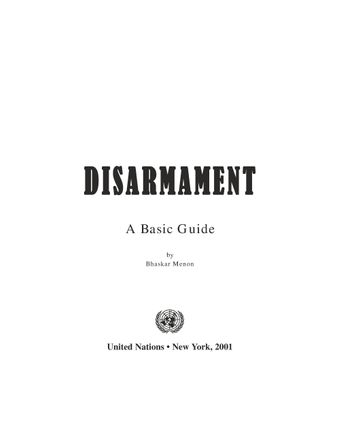- Home
- Books
- Disarmament: A Basic Guide
- Chapter
Chemical weapons

- Author: Bhaskar Menon
- Main Title: Disarmament: A Basic Guide , pp 18-21
- Publication Date: December 2001
- DOI: https://doi.org/10.18356/02388ba4-en
- Language: English
Chemical warfare is not unique to the human species, nor is it a recent development in history: as early as 431 B.C. the armies of Sparta used burning sulphur around the walls of besieged cities to disable the defenders. Modern use of chemical weapons occurred mainly during the First World War, when both sides had artillery-fired projectiles that released poisonous gases such as chlorine, phosgene and “mustard gas” (compounded of carbon, chlorine, hydrogen and sulphur). Poison gas created ghastly casualties, blistering the lungs, eyes and skin of soldiers, and subjecting victims to agonizing suffering. But it was not as efficient as conventional weapons, for effectiveness depended on uncontrollable external conditions: a turn of the wind could blow the gas from the intended victims to the attackers. That, plus general revulsion at the needless suffering inflicted, facilitated agreement on a ban on the use of poison gas, the 1925 Geneva Protocol on Gas Warfare. It was widely observed by all participants in the Second World War. However, chemical weapons were reportedly used by Italy in North Africa and Japan in China.
-
From This Site
/content/books/9789213628553s009-c003dcterms_title,dcterms_subject,pub_keyword-contentType:Journal -contentType:Contributor -contentType:Concept -contentType:Institution105

